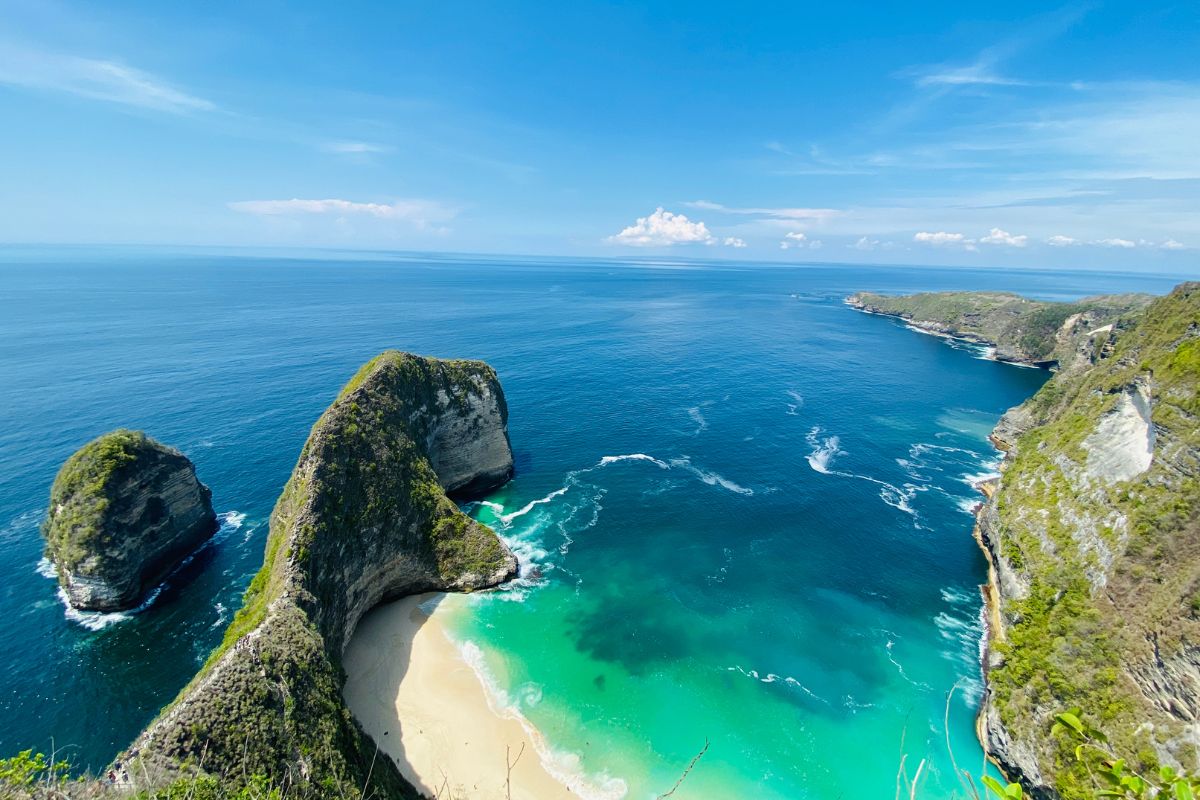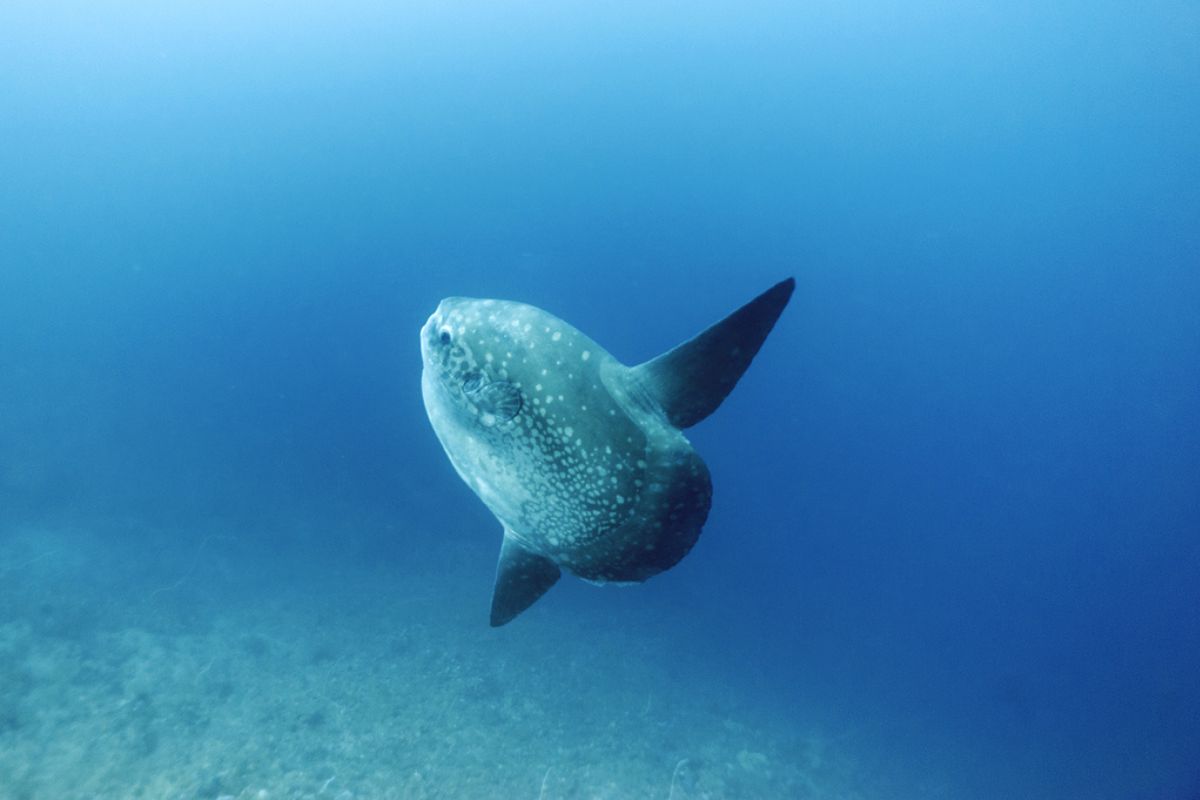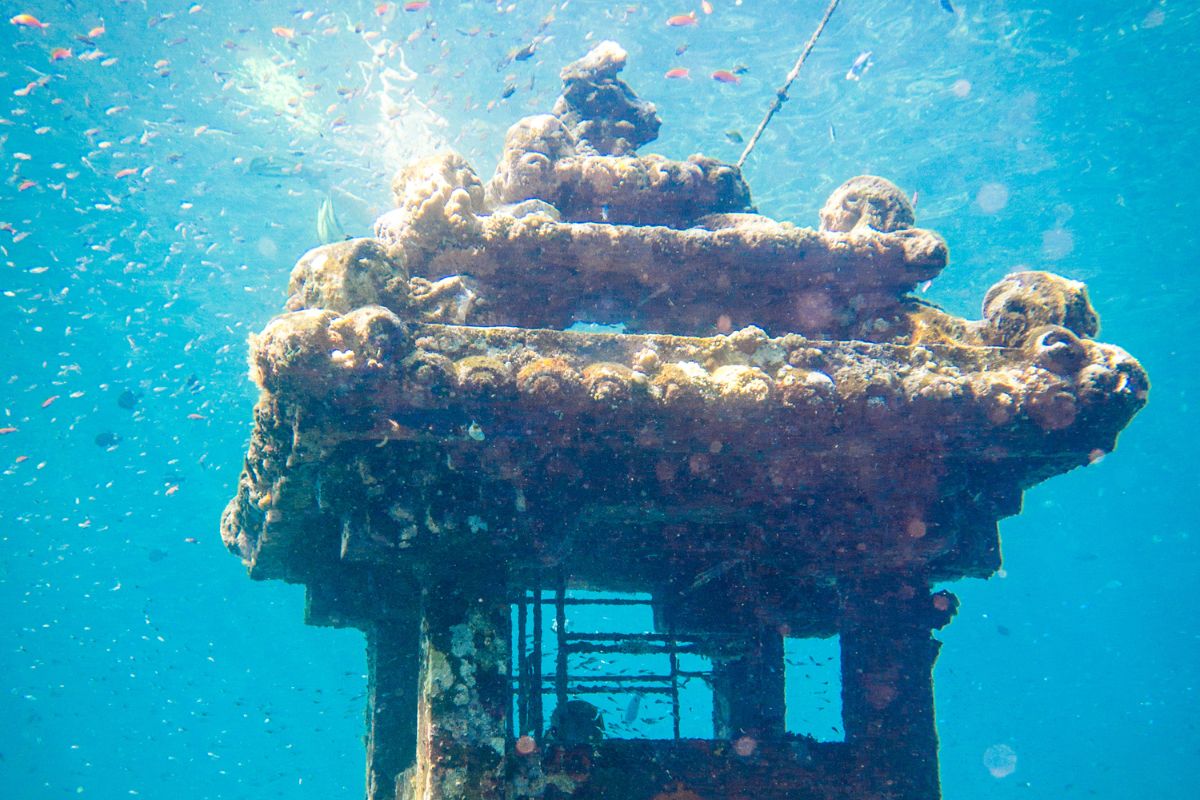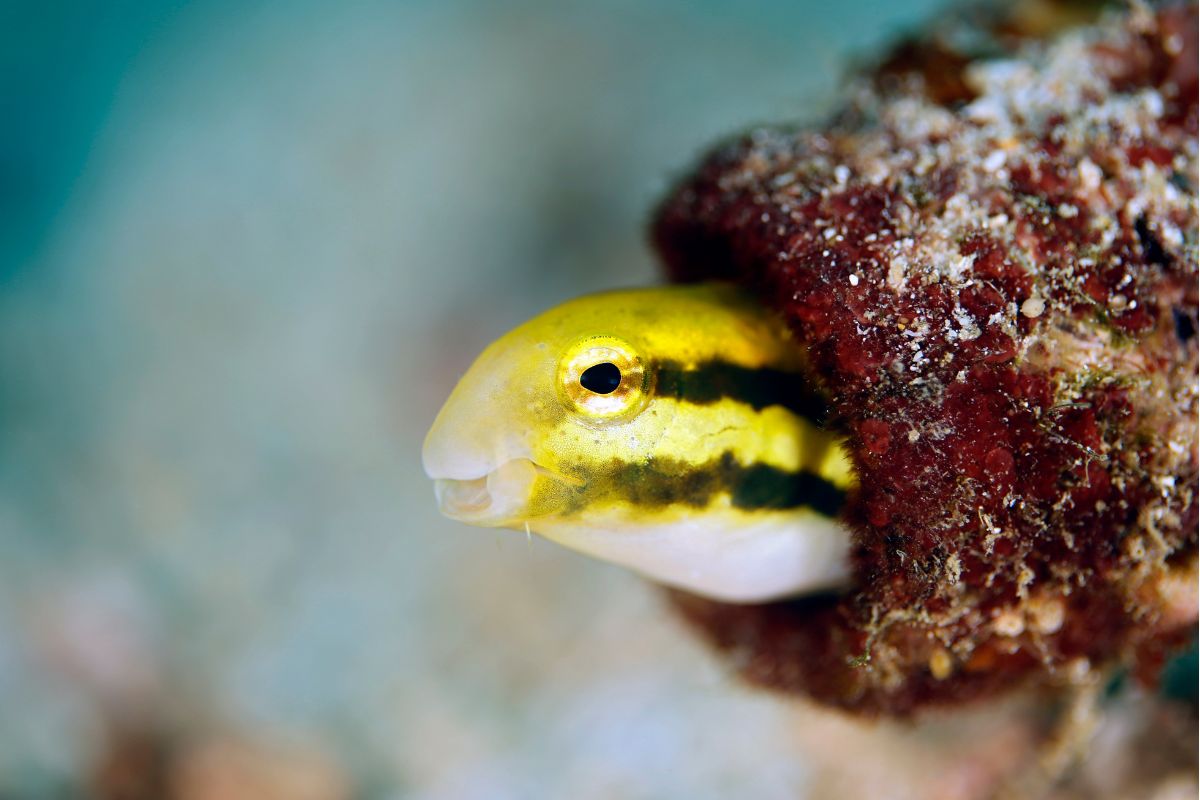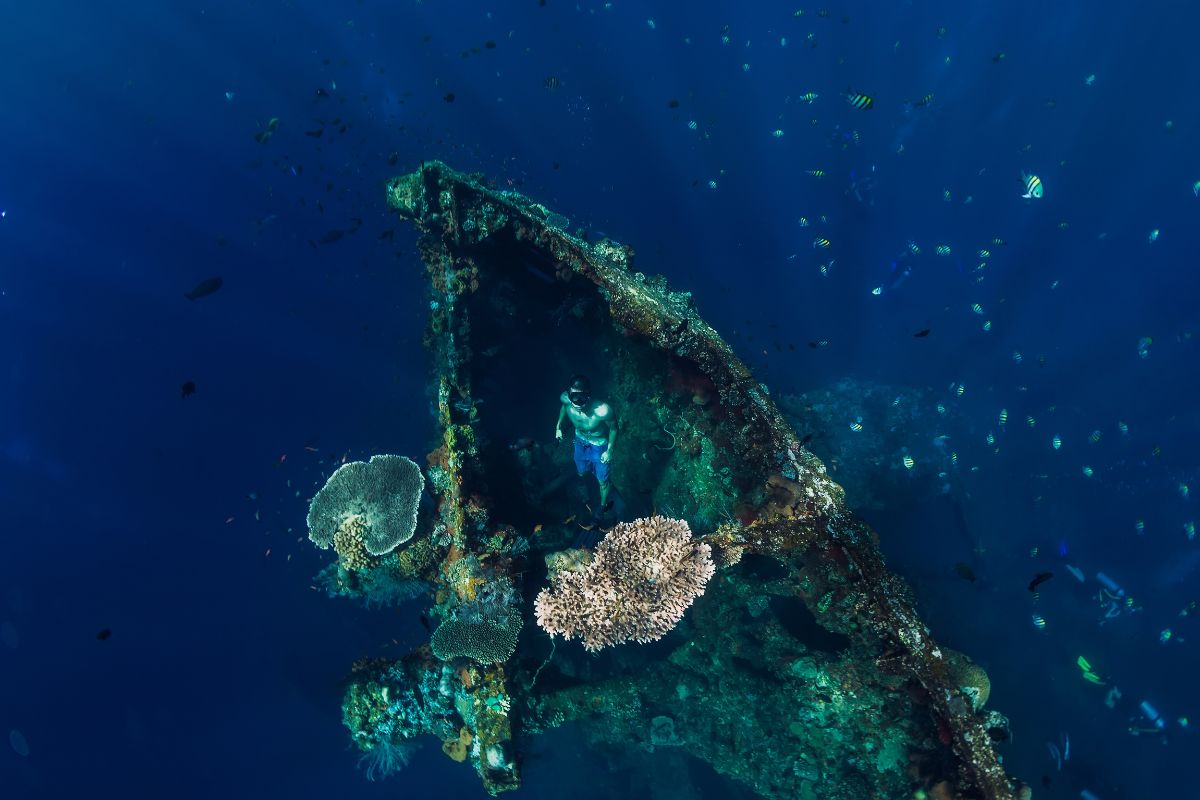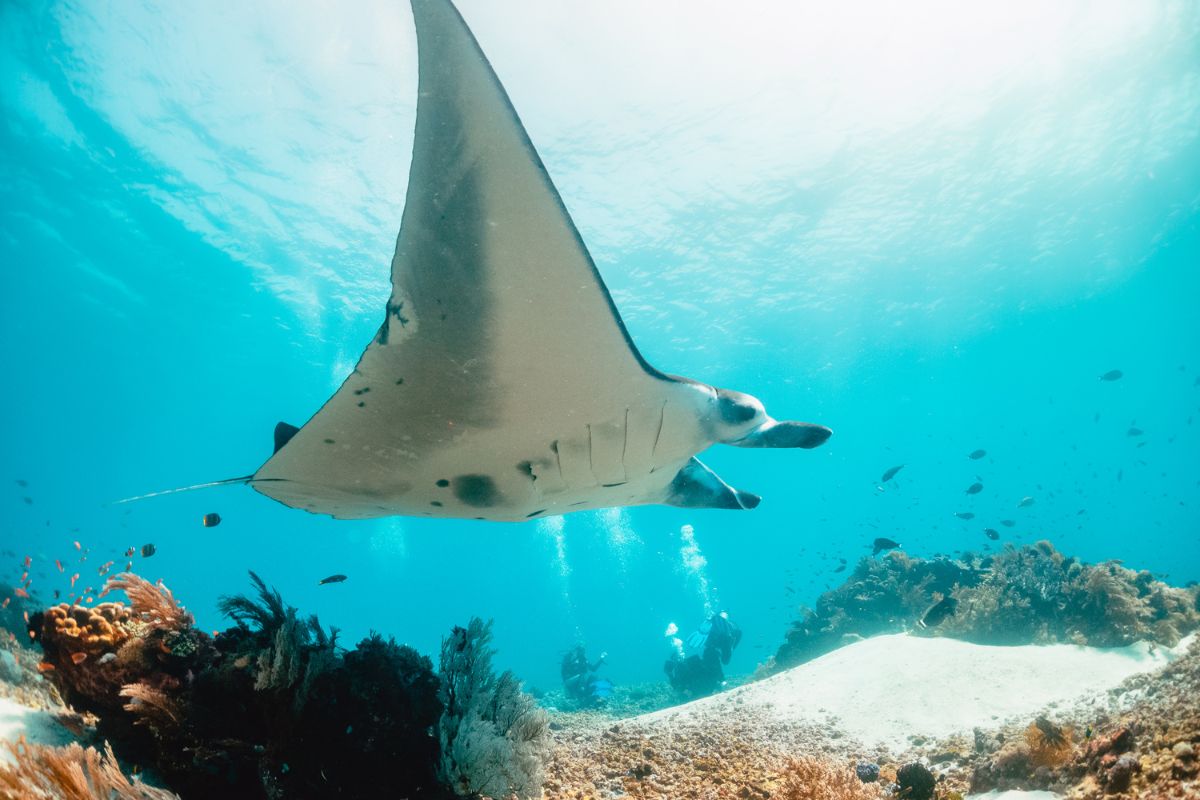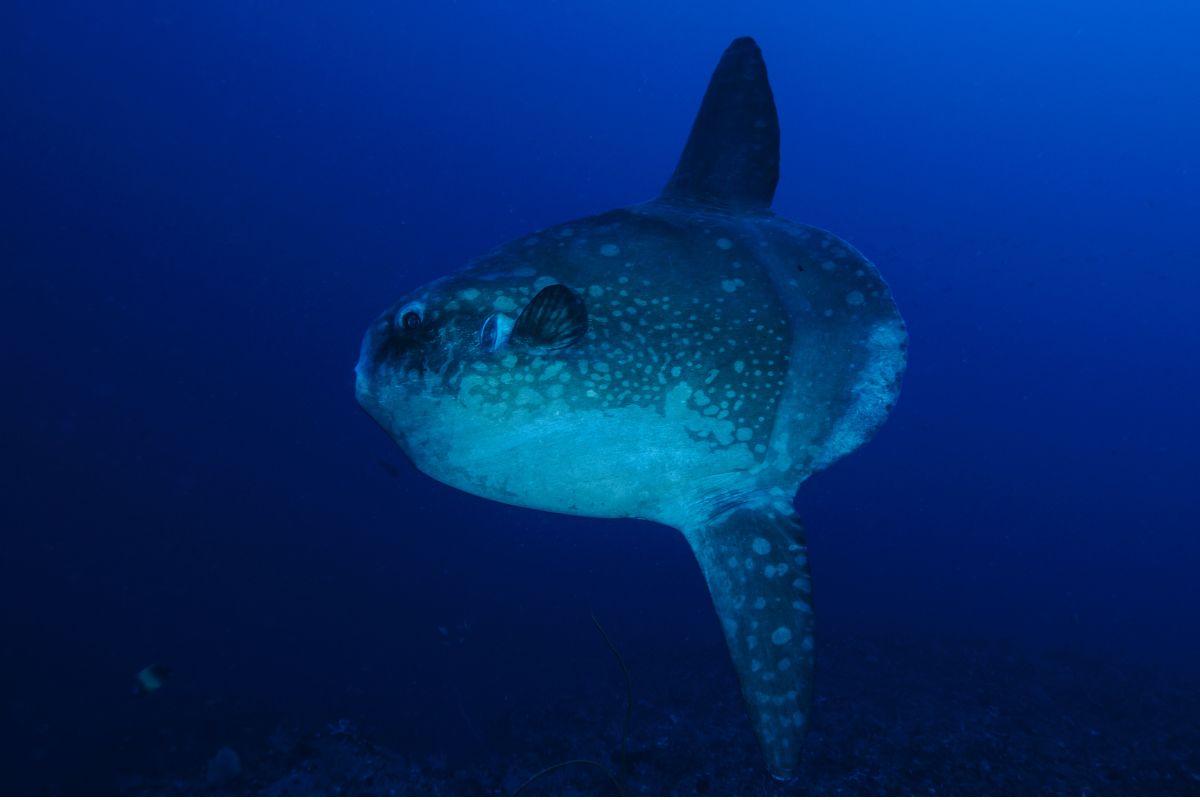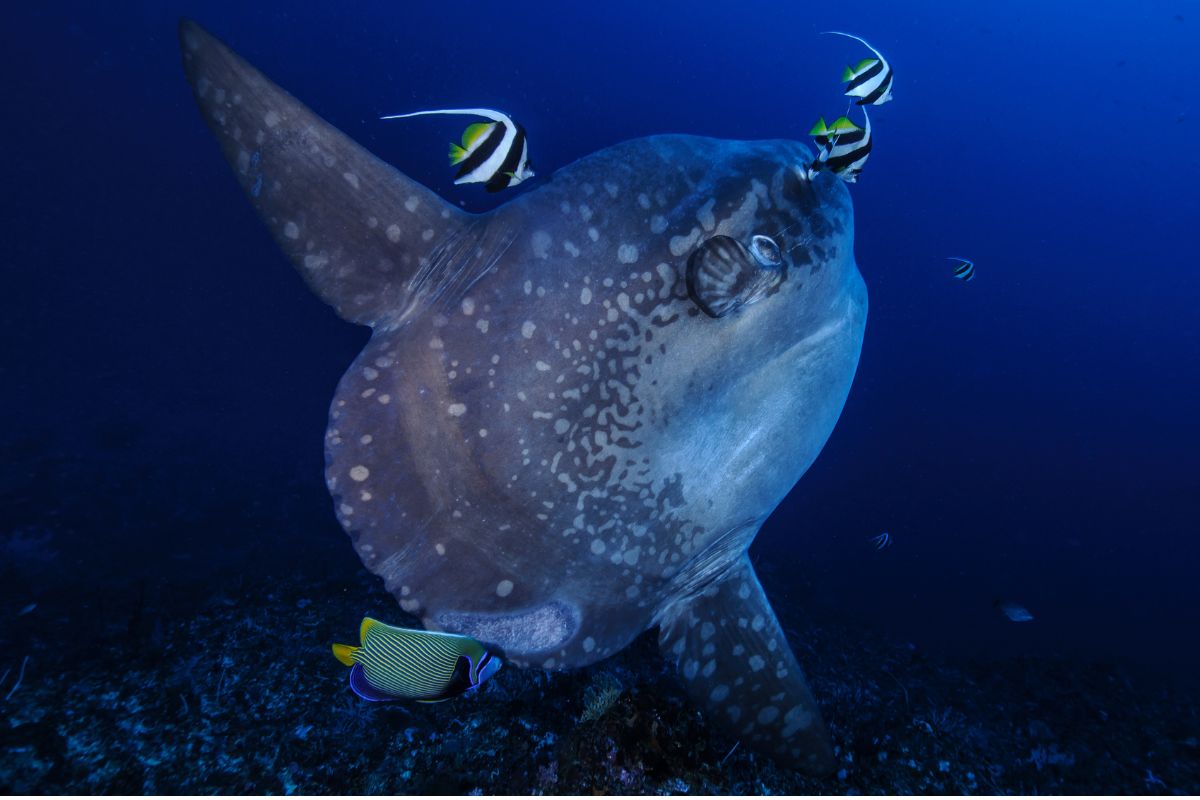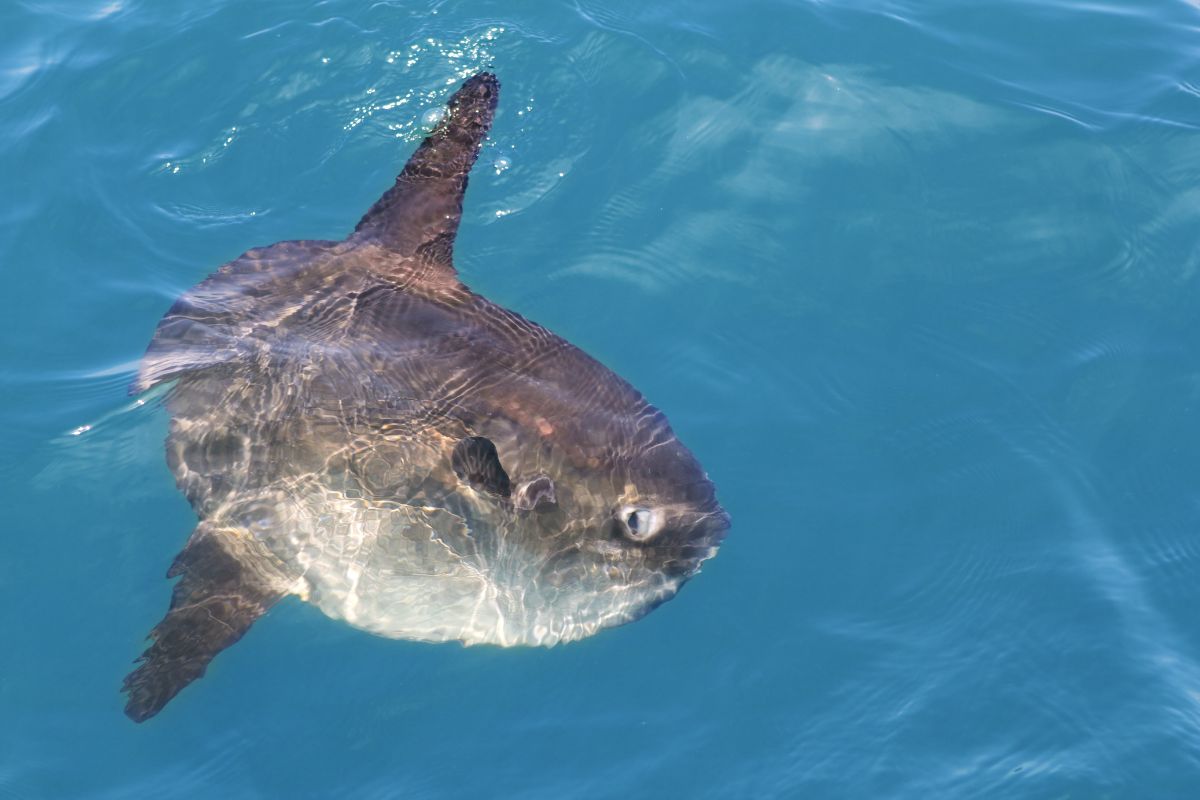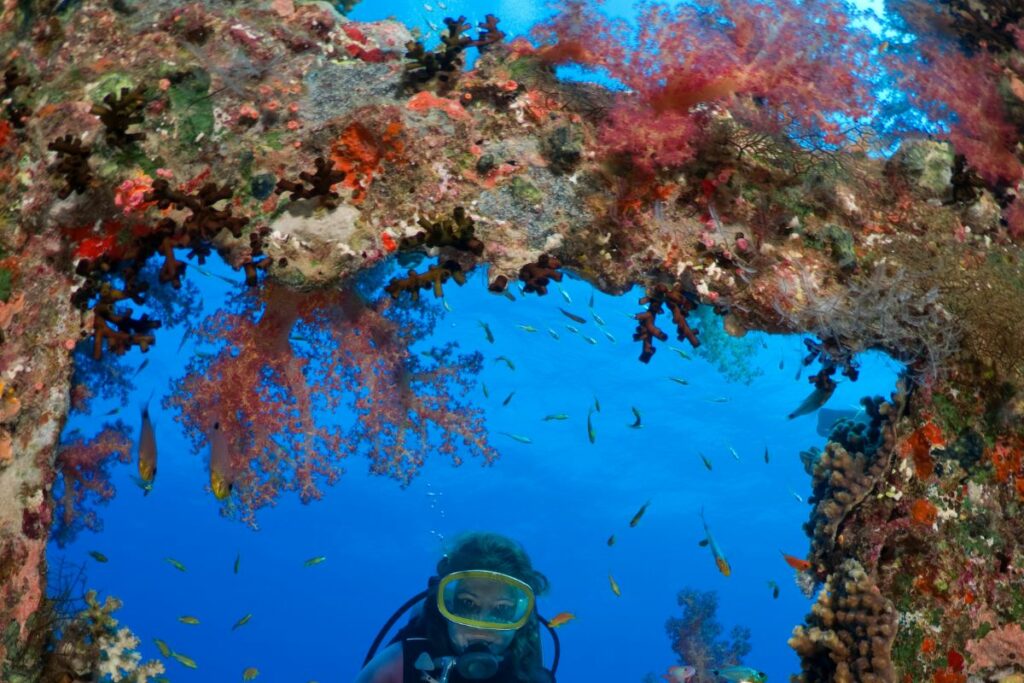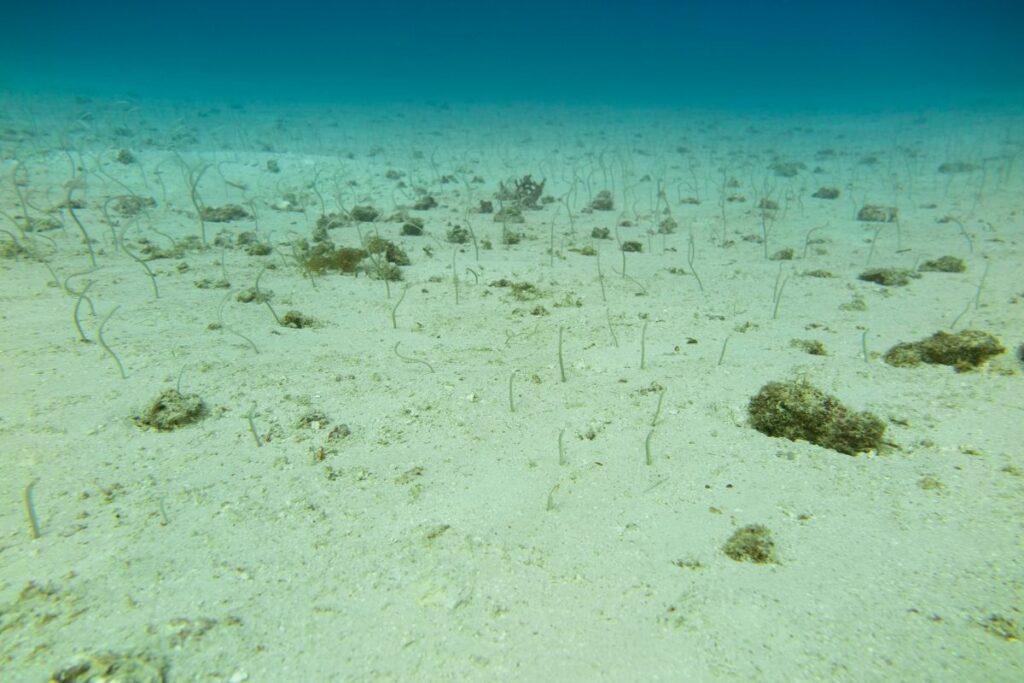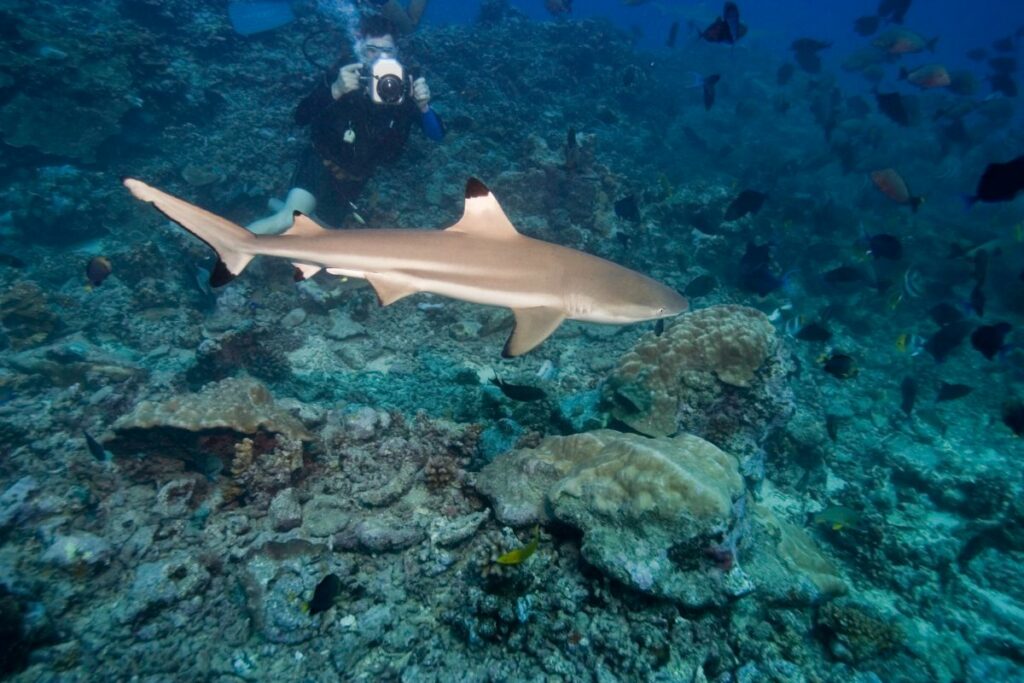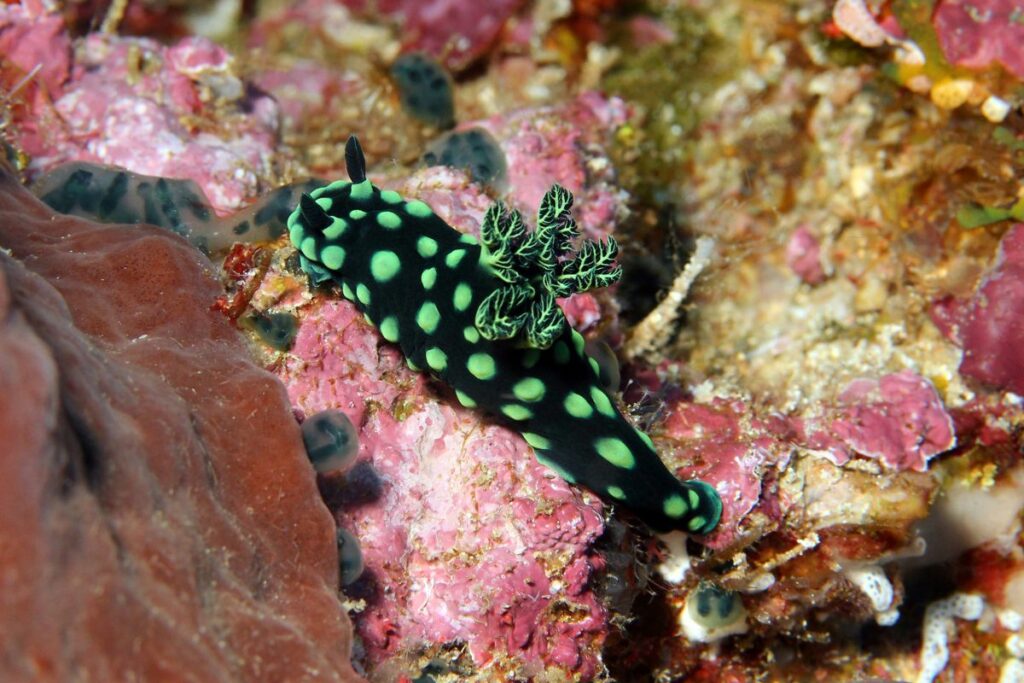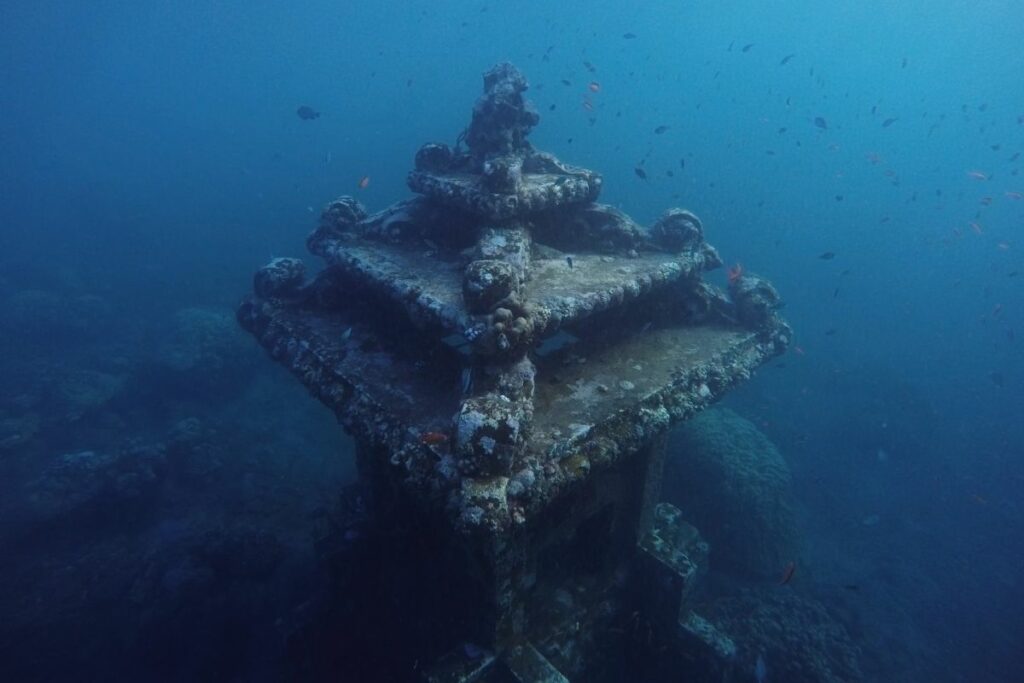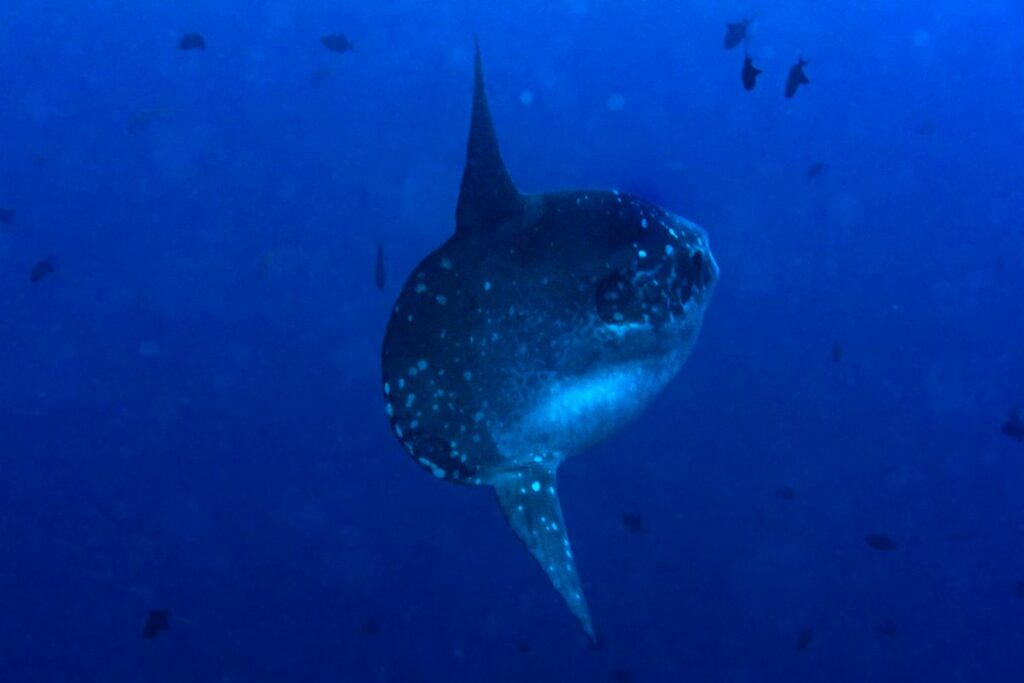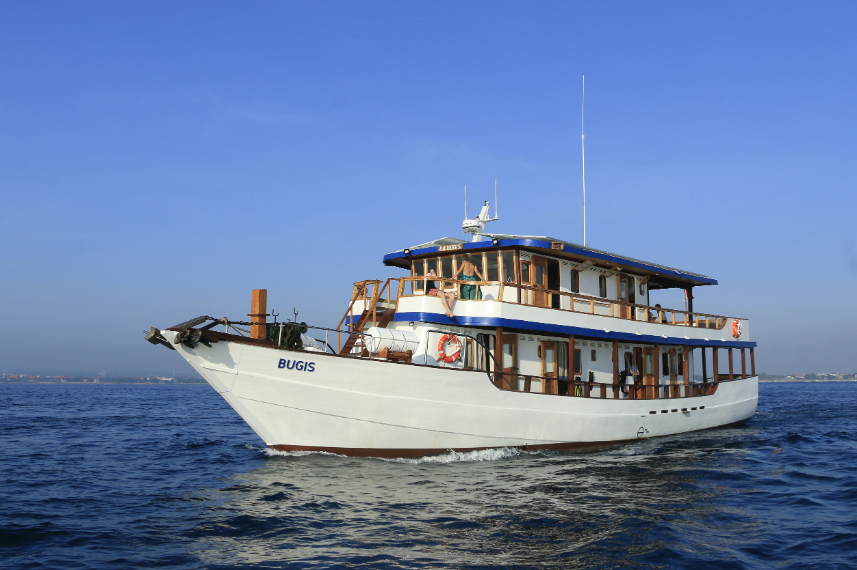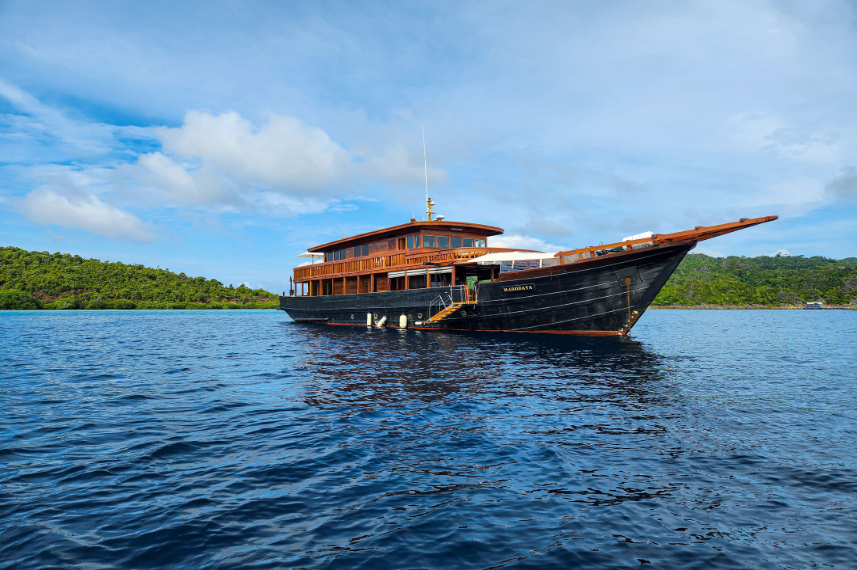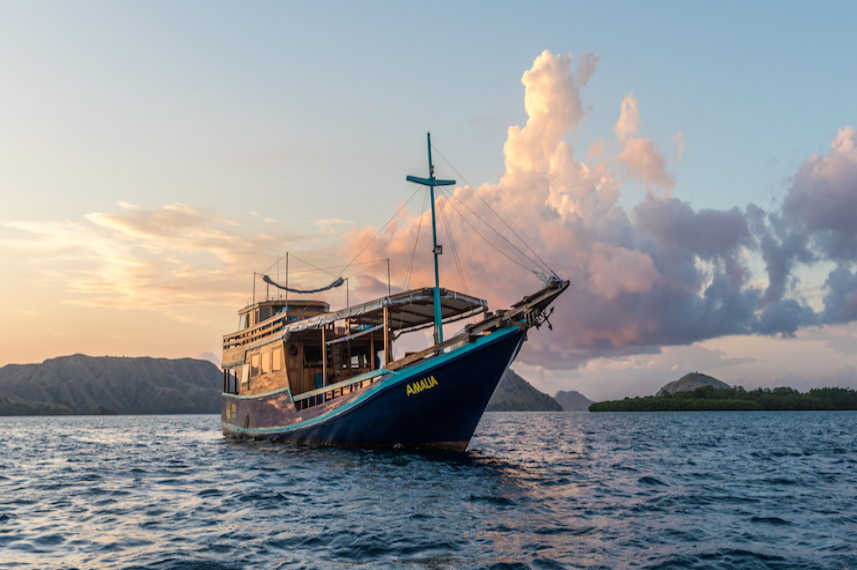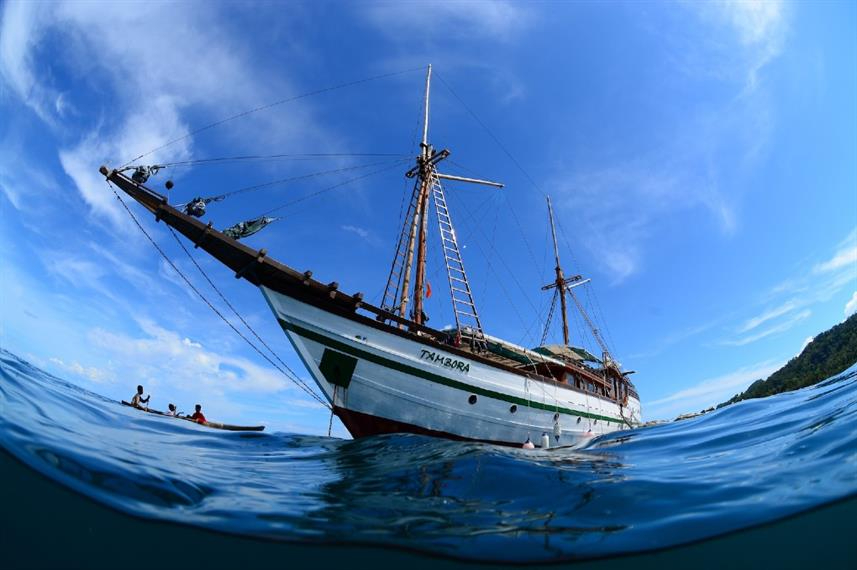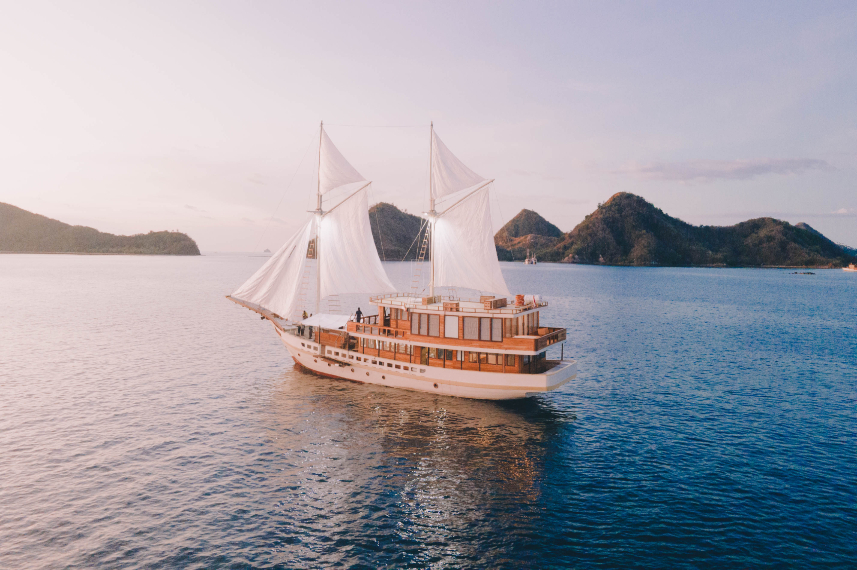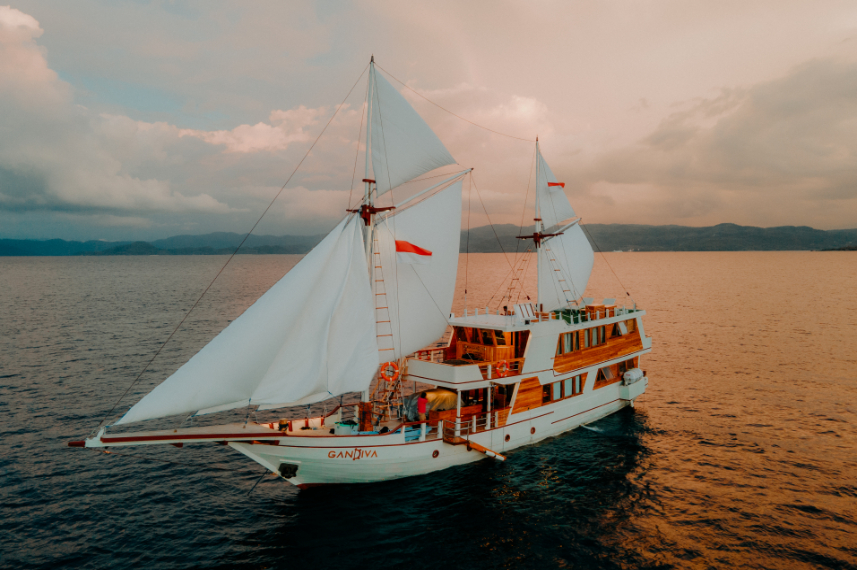Bali
Bali’s geographic position, surrounded by the body of water of the Indian Ocean in the south and the Bali Sea in the north, has created marine biodiversity unlike any other. The average level of healthy coral coverage in Bali is believed to be better than in Raja Ampat by 29% and Kaimana by 25%, with the highest range in the Candidasa area.
Bali, an underwater paradise, is a pleasure to behold and offers a phenomenal diving experience. Explore various diving sites available in Bali and immerse yourself in the diversity of it.
Top highlights of Bali
- Dive into the largest artificial reef project in the world located in Pemuteran Bay.
- USAT Liberty Wreck, one of the most renowned shipwrecks in the world, deserves to be explored more than once due to its massiveness.
- Diving with reef manta in Manta Point as you witness this giant ray let small fish clean their skin from the parasites.
- The sighting of mola-molas can be one of the highlights of diving in Bali.
- New fish species are being documented outside the 393 species of coral and 952 species of fish that have already been found. The latest documented species include cardinalfish, dottybacks, a garden eel, a sand perch, a fang blenny, and previously unknown bubble coral.
About Bali
Bali has been synonymous with its rich culture and heart-stopping landscape for decades. Famous for its Subak irrigation system, developed in the 9th century and enlisted in the UNESCO World Heritage List, Bali is also an anomaly within Indonesia. In a country where the Muslim population reaches almost 87%, Bali is the only island in Indonesia where 87% of its majority is Hindu. Bali is called the Island of Gods for a reason.
From the majestic Mount Agung to the lake of Batur down to the stunning beaches in the southern part, Bali is blessed with natural beauty on such a tiny island. Combined with the centuries of tradition still being practiced, Bali is a unique tourist destination in the world.
Surrounded by waters, fantastic surf breaks, and a few small islands, Bali is also a haven for surfers who have made Bali one of their top destinations since the 1970s. It’s not a surprise that Bali never misses a spot on the list of best places to visit in the world from various travel magazines because the combination of culture and nature is simply unrivaled.
Diving in Bali
Bali’s underwater paradise is rarely talked about compared to other dive sites in Indonesia, but fear not, as the beauty of marine life here is as spectacular as the views of the land.
Take the USAT Liberty Wreck in the Tulamben as an example. A Japanese torpedo hit this US Army cargo ship in 1942. The effort to tow the vessel was proven futile, so it sat on the beach of Tulamben for over twenty years before the eruption of Mount Agung caused an earthquake and pushed the ship to the bottom of the ocean. The rest is history. Eel gardens, bump heads, Napoleon fish, clown fish, scorpion fish, ghost pipefish, and colorful nudibranchs will be your company. Don’t be surprised if turtles and black-tip sharks make an appearance.
Have you ever wondered what the world’s largest artificial reef project looks like? Head to Pemuteran, where you will find the project surrounded by rugged and soft corals, gorgonians, sponges, sweetlips, moray eels, frogfish, puffer fish, flounders, batfish, octopus and nudibranch. The United Nations even handed a special award for this project at the UN Conference on Sustainable Development for its contribution to sustainable development.
Aside from various tropical and reef fish, diving in Bali allows you to see reef manta up close. Different species of sharks, including whitetip, black-tip, Indonesian greeneye spurdog, and one particular subspecies, Bali Catshark, discovered in 2005, can only be found off Bali’s coast.
Scientists even identified some new species discovered in Bali in 2023, which included two types of cardinalfishes, two varieties of dottybacks, a sand perch, a goby, a garden eel, a fanglebenny, and Euphyllia bubble coral.
Discover your next adventure in
Dive Along with The Ocean Sunfish A.K.A. Mola-Mola
One of the strongest magnets for diving in Bali is the sighting of ocean sunfish or Mola-mola. One of the world’s most massive bony fish can be spotted year-round in Bali, though it is more frequent from August to mid-November.
If you want to see this native of tropical waters, the best sites to observe are in Nusa Penida and Candidasa. You can even witness bannerfish, emperor angelfish, butterflyfish, and wrasse clean up Mola-mola’s body from afar while they do their cleaning ritual.
As with other wild animals in the ocean, keeping your distance is crucial. Especially with Mola-mola, you must be patient and let it approach you first, as it will swim away if you come too close.
Diving Environments in Bali
The waters around Bali are constantly in the range of 27 degrees Celsius, even though in Nusa Penida and Padang Bai, the water temperature can drop to 21 degrees Celsius, especially during the Mola-mola season. We recommend using a 3mm wetsuit as the standard to dive in Bali.
The average visibility is around 9-21 meters, but sometimes it can reach up to 40 meters in the dry season. At the same time, the depth range is about 5-40 meters in most of the dive sites.
Discover your next adventure in
How to get to Bali
Getting to Bali is easy, as most major airlines have Bali in their destination lists. As one of the most visited places in the world, many international flights offer service to fly to Bali. The entry point is the Ngurah Rai International Airport (DPS), located in Denpasar.
Once you land, the choice is endless as each corner of Bali is catered to different types of visitors. You can spend a few nights in the southern part (Kuta, Seminyak, Canggu, Nusa Dua, Uluwatu), or you can directly hit the road to the dive spots in Amed, Tulamben, or Pemuteran, which are located in the northwestern and northeastern part of Bali respectively, around 3-4 hours ride by car.
Diving Seasons & Weather in Bali
Though generally, diving in Bali can be done all year long, the best season to dive is from April to November when the visibility and the weather are clear.
The dry season between April and October means the surface conditions are calm, and the sightings of mola-mola and turtles are abundant. The worst time is December and January since these two months are the peak wet season, which makes visibility limited and the surface rough. But if you want to see the manta at its peak, then December to April is the best time since the plankton are abundant, attracting the reef manta.
Dive Sites in Bali
Marine Life in Bali
Bali’s underwater marine life may not be as famous as the iconic landscape on the island. Still, since Bali waters are within the Coral Triangle area, the biodiversity found here is remarkable.


